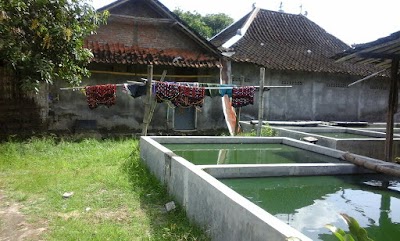Kwama Village (Kwama Village)
Overview
Kwama Village is an enchanting and culturally rich destination nestled in the East Sepik province of Papua New Guinea. Known for its vibrant traditions, stunning landscapes, and warm hospitality, Kwama offers an authentic glimpse into the lives of the Sepik River communities. The village is part of the larger Sepik River region, celebrated for its intricate wood carvings, traditional ceremonies, and unspoiled natural beauty.
Historical Significance
Historically, Kwama Village has been inhabited for thousands of years. The people of Kwama belong to the Sepik River tribes, renowned for their artistic prowess and deep spiritual connections to the river and surrounding environment. For generations, the Kwama people have upheld their cultural heritage through storytelling, carving, and ceremonial practices that are passed down to each subsequent generation. The village’s history is a tapestry of legends and traditions, making it a living museum for anyone keen on understanding Papua New Guinea’s rich cultural landscape.
The Sepik River Experience
One of the most significant aspects of Kwama Village is its location along the Sepik River, one of the world's great river systems. The river serves as a lifeline for the village, providing fish, transportation, and a means of cultural expression. Canoe journeys along the Sepik River are a quintessential experience, offering tourists an intimate view of daily village life and the lush, surrounding rainforests. The river is also crucial for the famous Sepik River Crocodile Festival, an annual event that celebrates the crocodile's role in the local culture and environment. This festival features spectacular dances, traditional music, and the sharing of ancient tales, drawing visitors from all over the world.
Art and Craftsmanship
Art lovers will find Kwama Village particularly appealing due to its renowned woodcarving craftsmanship. The villagers create intricate masks, totems, and sculptures that are not only beautiful but also imbued with spiritual significance. These artworks often depict ancestral spirits and are used in various ceremonies and rituals. Visitors can watch as artisans skillfully carve these pieces by hand, often using tools and methods that have been passed down unchanged for centuries. Purchasing a piece of Kwama art is not just a wonderful souvenir; it also supports the local economy and helps preserve traditional arts.
Exploring the East Sepik Region
Moreover, Kwama Village is an excellent starting point for exploring the broader East Sepik region. Nearby attractions include Wewak town, known for its stunning beaches and historical World War II relics. The town serves as the gateway to other riverine villages, each offering unique cultural experiences. Additionally, the Chambri Lakes are just a short boat ride away from Kwama, presenting opportunities for bird watching, fishing, and encountering other small communities with their distinct customs and ways of life.
Warm Hospitality and Local Culture
Tourists visiting Kwama will find themselves welcomed with open arms by the villagers, who are eager to share their way of life and stories. Accommodations in the village range from traditional stilt houses to more modern guesthouses, all offering a comfortable stay while preserving an authentic feel. Visitors are often invited to participate in daily activities such as fishing, sago making, or basket weaving, providing a hands-on understanding of the local culture and lifestyle.
Spiritual Practices and Community
Another interesting aspect of Kwama Village is its role in traditional spiritual practices. The Sepik region is known for its strong beliefs in ancestor worship and spirit houses, known locally as "haus tambaran." These spirit houses are central to village life and serve as focal points for ceremonies and communal gatherings. The architecture of these buildings is unique, often adorned with elaborate carvings and totems that reflect the mythology and ancestral lineage of the tribe. Visiting a spirit house is a profound experience that offers insights into the spiritual and social fabric of Kwama and its people.
Conclusion
In conclusion, Kwama Village in East Sepik, Papua New Guinea, promises an enriching and immersive travel experience. From its deep historical roots and vibrant cultural practices to its stunning natural surroundings and exceptional artistry, Kwama offers a unique window into the heart of the Sepik River communities. Whether you are an adventurer, art enthusiast, history buff, or simply seeking a peaceful retreat, Kwama Village invites you to explore and connect with one of Papua New Guinea's most extraordinary locales.





